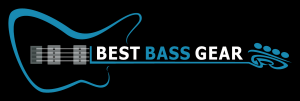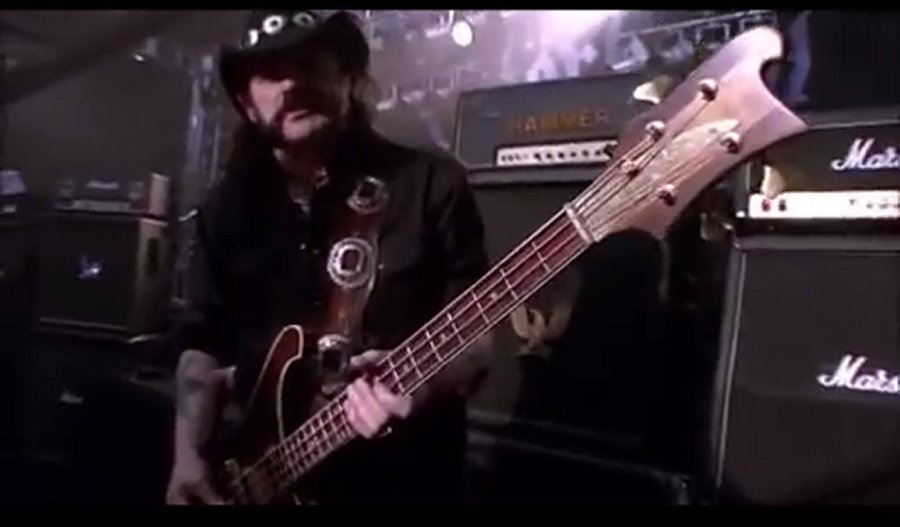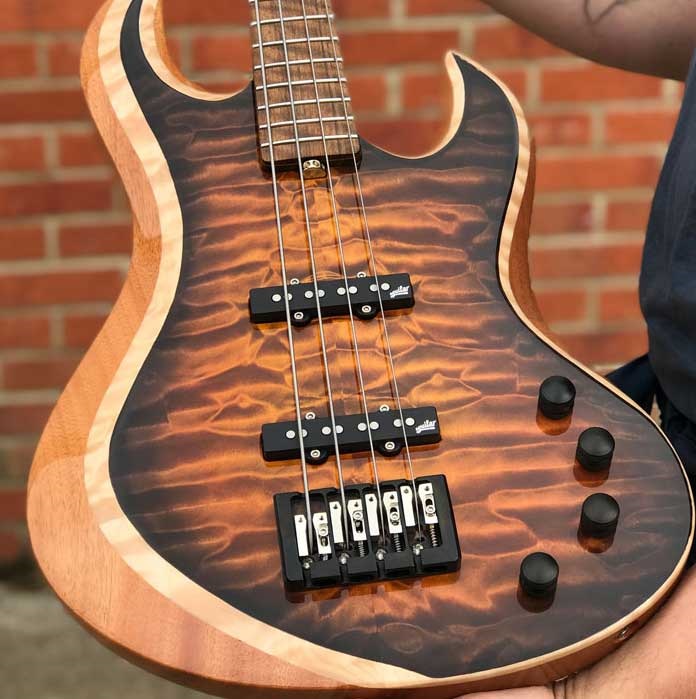Some bassists are all about grace and pluck each note in a very delicate way to bring about the cleanest possible bass tone…
…but that’s not Lemmy and it never was.
Lemmy’s sound is a Rickenbacker bass using only the rear treble pickup with everything turned to 10 and played with a pick in a strumming guitar-player-like way.
However, there’s more to know than just picking up a Rickenbacker and going for it.
Lemmy did use power chord 5ths often (again, guitar-player-like play.)
Lemmy’s bass tone hardly has any bass in it. It’s basically all distorted midrange.
The amplifier head Lemmy used for 30 years (yes, really) was a model 1992 Marshall Super Bass Head (1976 build) that he nicknamed “Murder One”. He only stopped using that when Marshall themselves built Lemmy a prototype signature 100-watt head in 2007 modeled after the ’76 head called the 1992LEM. In the newer head, the main difference is that compared to the original, it has circuitry of both the Super Bass and Super Lead, allowing for greater frequency range.
To get that cool distorted Lemmy bass tone however, there are two ways of going about it.
Method 1: Turn up the amp, juice the tubes (meaning get them hot) and blare it out.
Method 2: Use an appropriate distortion effect.
Two pedals that work great for Lemmy-like tone are MXR M85 and EBS Metal Drive. The MXR gives you more tone shaping ability while the EBS has a tube-type sim filter than can be enabled/disabled at whim.
Now of course, the big 100-watt head with hot tubes is the preferred way to get the Lemmy sound, but since not everyone can blast out a Marshall amp setup when recording, using a pedal works too.
And again, with Lemmy tone you have to think more like a guitar player both in style and note choices. Use power chord 5ths, keep the tone very squarely planted in midrange frequencies and stay there.




BUT…Are you badassed enough to try to “LEMMY”?
Well…are-ya’, punk?
He was a real badass but way overrated bassist, imho
Well that’s nonsense
Ask art for an opinion- he’ll give you one!
I “play” as Lemme regularly. I use mid ’80’s Rickenbacker 4001’s and a 2014 4003W. My amp is an exact clone of Murder One through either 2×15 (celestion) and 2×12 (celestion), 4×15 and 4×12, or 15/12 in a single cab. My eq is bass 0, mid 10, treb 0.
http://www.facebook.com/ironfistbuffalo
Interesting sound absolutely! Not the standard bass tone, but if it worked for Lemmy, it could work for you if you play a similar style.
I was never a Motorhead fan, but for some reason checked out the Lemmy biopic on Netflix and found it sufficiently interesting to sit through. I was horrified to hear his sound – to me that is not bass playing, that is playing rhythm guitar on a bass. Sorry, not a fan. I thought he was an interesting guy but the last thing on earth I would ever want to do was to recreate that sound. I thought his custom three-pickup Ric was pretty cool looking but didn’t make me want one.
man you are fucking crazy. His tone is completely unique and what gave them their classic sound.
“playing rhythm guitar on a bass”
I think you nailed it with that analogy. However, I rather like the unique approach and sound to their rock power trio that had its own thing going on. If Lemmy played bass like a bass player we’d probably never heard of him or Motorhead.
I remember asking Lemmy what kind of speakers he was using
His reply : the more F###K up the better 🙂
Lemmy wasn’t overrated he was original, a pioneer. He made mouldbreaking music and was true to himself. Missed his Hawkwind days but I saw Motorhead countless times from 1978 onwards. There really is a Motorhead shaped hole in the world. Don’t copy him – find your own sound!
Was he a bassist or a rhythm guitarist on bass? Was he a great bassist? Was he a great singer? Were his songs well written? All irrelevant as the overall sound at volume and its effect on how I feel are unmatched by anything.
Lemmy is rock and roll. RIP
Lemmy, like me, was underwhelmed by the tonal drop that occurred in the standard power trio when the guitarist stopped playing chords with the occasional single note break and started playing lead. Extra volume just did not cut the mustard not even with Jimi Hendrix or Rory Gallagher. Having started his musical life as a rhythm guitarist Lemmy adapted this to the bass so, as can be heard so well in Motorhead’s sound, there is no tonal drop when the guitarist plays lead. In fact, it gives the guitarist a lot more freedom if the bass and rhythm are combined; to me it’s the perfect combination. The bass does not have to be distorted – that was to do with the style of music Lemmy played. The technique works just as well for Rock using a less distorted bass. I know because that’s how my band rolls, Of course, it would not do for Jazz, Country or Pop or whatever, but each genre has its own playing technique for the instruments so it’s no use snootily dismissing Lemmy’s style of bass playing. It suited his genre of music perfectly as his millions of fans and admirers will tell you.
Lemmy had fabulous bass tone and one could feel it like Noel Redding playing through a wall of Sunn cabs. As far as volume, it made a tremendous effect with Hendrix and others. All those daisy-chained 100W full Marshall stacks facilitated phenomenal harmonics, overtones, and feedback for an experience you couldn’t imagine unless you saw Hendrix in person. Lemmy was a roadie for the Jimi Hendrix Experience for a period of time. He saw firsthand the crowd reaction from high stage volume. That is what I like about Lemmy. He was old school. A lot of millennials disdain old school now, opting for a mic stuck in front a single 12″ speaker running a PA. That’s why their still playing for 20 people at their shows.